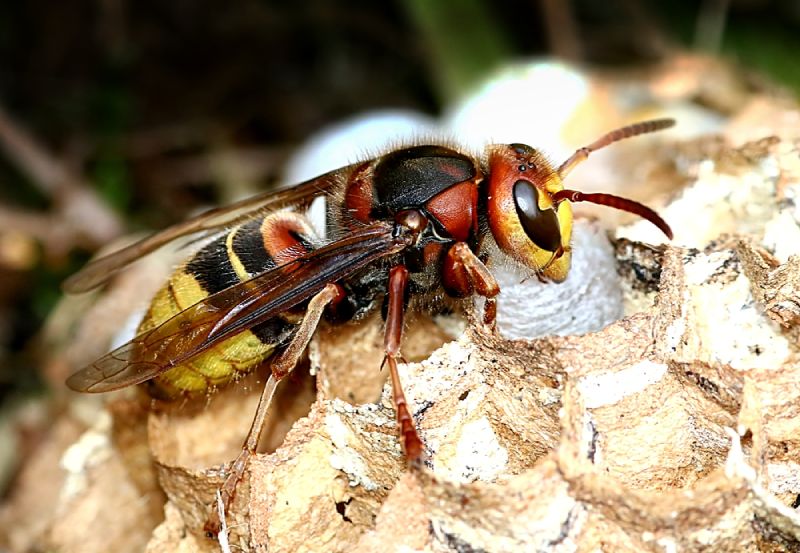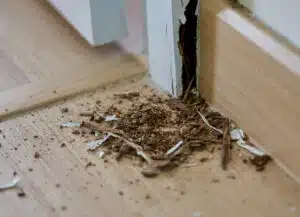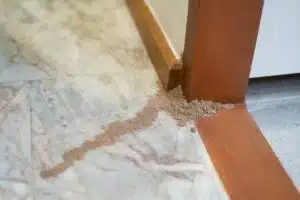In part one of this two-part blog series, we went over some of the most common summer stinging insects to be aware of around your property. There are a variety of such insects out there, ranging from low-risk to a few that may present significant concerns for both health and structures, and being able to tell them apart is a valuable tool.
At A-1 Exterminators, we offer comprehensive insect control services that include every possible stinging insect you could run into on your property. We’ve seen each of these insects and know exactly how to deal with them in every case. In today’s part two, here are a few additional hornet and wasp varieties to be aware of in terms of visual characteristics, nest formats and other qualities.
European Hornet
The European hornet is similar to many wasps you’ll find, but one important difference is that it’s active during both the day and the night. This is a yellow-headed insect with black eyes and yellow stripes, one that tends to build single-entrance paper nests at least six feet above the ground. It’s less aggressive than the bald-faced hornet or yellowjacket, though it will protect its nest area.
Common nest locations include attics, wall voids and similar areas. European hornets are known to be attracted to light – in many cases, extermination efforts will involve moving the insects to a lighted area while treating the nest separately.
Paper Wasp
Named for the paper-like material used in their nests, the paper wasp may also be called an umbrella wasp – this is due to the shape of the nest, which can resemble an umbrella in many cases.
Paper wasps look similar to yellowjackets but with a more brownish hue, and tend to emerge during spring periods. They often build nests in residential areas – they’re not aggressive by nature, but will definitely sting if they’re disturbed or they sense a threat to the nest. Stings from paper wasps can be extremely painful and also lead to allergic reactions, so this is one wasp type you should call our exterminators about right away if you discover a nest.
Mud Dauber Wasp
Finally, mud dauber is a common name for wasp types that build their nests from mud. There are several such species found in the US. One of their most telltale signs: Unlike nearly all other stinging insects, mud dauber wasps are solitary and do not live in colonies.
Mud daubers almost never sting and are far less aggressive than some of the other types we’ve been over here. However, with provocation, they will sting just like any other stinging insect.
For more on the various stinging insect types you may see on your property and how to identify them, or to learn about any of our pest control or exterminator services, speak to the staff at A-1 Exterminators today.



